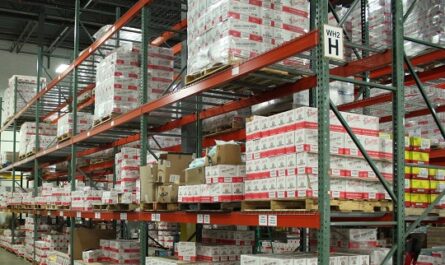Automation in supply chain operations is one of the hottest topics in modern business. It’s easy to see why: the promise of increased efficiency, reduced human error, and round-the-clock productivity makes it an attractive investment for companies aiming to streamline their processes.
But what happens when this conversation shifts to countries where labor is cheap? Does the high investment in automation still make sense in regions where the cost of employing workers is significantly lower than in more developed economies?
If you’re grappling with this dilemma, you’re not alone. Let’s dive into this complex issue together.
Before we go further into this topic, don’t forget to follow my LinkedIn account. You’ll get more helpful insights on supply chain management there.
Table of Contents
The Temptation of Low Wages
Imagine running a business in a country where wages are among the lowest in the world. Labor-intensive industries, particularly in supply chain operations like manufacturing, warehousing, and distribution, thrive in such environments.
Why?
Because it’s easy to keep costs down when your workforce is affordable. On the surface, this seems like a no-brainer. Why pour millions into automation when you can hire hundreds of workers at a fraction of the cost?
But there’s more to this equation than meets the eye. Low wages don’t always equate to low costs. Consider factors like employee turnover, absenteeism, productivity inconsistencies, and the cost of training new workers. Over time, these “hidden” costs can add up, leaving companies wondering if automation might be a better long-term solution. Still, the initial cost of investing in robotics, AI, and other automated systems feels daunting, especially when returns may take years to materialize.
The True Cost of Automation
Automation isn’t cheap. Implementing robotics in a warehouse or adopting AI for supply chain management involves significant upfront costs—not just for the technology itself but also for installation, integration, and employee training. On top of that, there’s ongoing maintenance and occasional upgrades to ensure the systems remain competitive and efficient.

Now, let’s talk about ROI (return on investment). In high-wage countries, the ROI of automation is often clear-cut. If you’re replacing workers who earn $20 to $30 an hour with machines that require minimal supervision, the math works in your favor. But in countries where wages are closer to $1 or $2 an hour? The story becomes more complicated.
In such scenarios, the payback period for automation can stretch over a decade or more, making it hard to justify the investment in the short term. Businesses operating on tight margins may feel stuck in a perpetual balancing act, torn between the allure of cutting-edge technology and the immediate savings of a low-cost workforce.
You might also like:
- Managing Deflation’s Impact on the Supply Chain: Challenges and Solutions
- Staying Strong in Supply Chain: How to Make Tough Decisions Without Outside Influence
Beyond the Numbers: The Intangibles
Here’s where the conversation gets interesting. While automation’s ROI might seem less appealing in low-wage countries, there are intangible benefits that often go unnoticed. Take consistency, for example. Automated systems don’t call in sick, need breaks, or make errors due to fatigue. They operate with precision, maintaining high standards of quality and reliability that can be hard to achieve with human labor alone.
Then there’s scalability. Imagine your business is growing rapidly, and you need to double production. Recruiting, training, and managing twice as many workers takes time and effort. With automation, scaling up can be as simple as increasing output from your machines. This kind of agility can give businesses a competitive edge in fast-moving markets.
Finally, there’s the issue of risk mitigation. In today’s world, labor strikes, pandemics, and political instability can disrupt supply chains in the blink of an eye. Automation offers a level of stability and control that can safeguard operations against such risks.
When Low Wages Aren’t Enough
Think about this: low wages might make automation seem unnecessary, but what happens when global trends shift? Wages in developing countries are rising faster than in developed ones, and the competition to attract foreign investment often leads governments to enforce stricter labor laws. Over time, the very advantage that made low wages appealing could disappear, leaving businesses unprepared for a new reality.
In such a scenario, companies that have already embraced automation will be ahead of the curve, while those relying solely on cheap labor may struggle to adapt. Automation isn’t just about cutting costs; it’s about future-proofing your business in a world where change is the only constant.
Balancing Act: Finding the Sweet Spot
So, where does this leave you? The answer isn’t black and white. Automation and low wages don’t have to be mutually exclusive. In many cases, a hybrid approach works best. By automating repetitive, labor-intensive tasks while retaining a human workforce for roles that require creativity, problem-solving, and emotional intelligence, companies can strike a balance between efficiency and cost-effectiveness.
Take a warehouse, for example. Robots can handle picking and packing, reducing errors and speeding up the process, while human employees focus on quality control, inventory management, and customer service. This synergy between humans and machines not only optimizes operations but also creates a more resilient and adaptable workforce.
You might also like:
- Staying Strong in Supply Chain: How to Make Tough Decisions Without Outside Influence
- Without the Right KPIs, You Can’t See the True Performance of Your Supply Chain
Automation as a Strategic Decision
Ultimately, the decision to invest in automation boils down to your long-term vision. Are you focused solely on cutting costs, or are you looking to build a sustainable, future-ready business? Automation is more than a financial calculation; it’s a strategic move that positions your company for growth and innovation.
Remember, automation doesn’t have to be an all-or-nothing proposition. Start small, identify the areas where automation can deliver the most value, and scale up as needed. This phased approach minimizes risk while allowing you to reap the benefits of technology without overextending your budget.
A Question of Perspective
If you’re still wondering whether automation is worth it in a low-wage environment, take a step back and look at the bigger picture. Consider the evolving dynamics of global supply chains, the potential for unexpected disruptions, and the growing demand for faster, more reliable service. Automation isn’t just about replacing workers; it’s about building a supply chain that can weather the storms of an unpredictable world.
Yes, the upfront costs are high, and the immediate ROI might not be as compelling as in high-wage countries. But when you factor in the long-term benefits—consistency, scalability, risk mitigation, and future readiness—the case for automation becomes much stronger.
So, where do you stand? Is automation the right choice for your business, or are low wages too tempting to ignore? The answer lies in your unique circumstances, goals, and willingness to embrace change. Whatever path you choose, remember this: the future of supply chain management is neither purely human nor purely automated. It’s a blend of both, and finding that balance is where true success lies.
I hope you find it helpful!
Please share this article with your colleagues so they can also benefit. For more insights on supply chain management, follow my LinkedIn account. You’re free to use all articles on this blog for any purpose, even for commercial use, without needing to give credit.
 by
by 